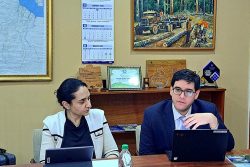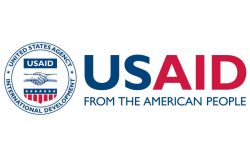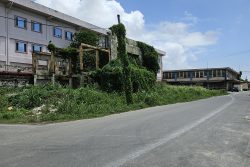Government is currently making attempts to resuscitate the Morawhanna fish port complex in Region One—a project which never fulfilled its intended purpose since coming on stream in the 1980s.
A request for proposal was recently made public in the state-owned Guyana Chronicle for persons who have interest in the complex to submit such proposals to the government’s holding company, the National Commercial and Industrial Investments Limited (NICIL).
Region One Chairman Fermin Singh told Stabroek News recently that the project, which was launched some time in the mid-1980s, has been at a standstill since it was unveiled. He explained that the intention was to have the fishermen in the area take their catch to the facility for it to be processed and then re-sold to the public. He noted that this would have happened in the initial phase of the project but since the Morawhanna Fishermen Cooperative Society became defunct, the facility’s intended purpose phased away simultaneously.
Singh said that the Guyana Oil Company (GuyOil) was operating its fuel depot from the complex but the company has since closed its operations in Region One, citing unfair competition from fuel smugglers who practice their trade between the region and neighbouring Venezuela.
He said that NICIL recently requested information on the project and he toured the facility along with regional officials to have a look at its current state. He has since submitted information relative to the facility to the holding company.
A Trinidadian national had entered into an agreement with the authorities to lease the facility and he was selling fuel there but only for a short period.
Singh said that, disappointingly, the individual did not deliver on his plans but another businessman who hails from the region was left in charge of the facility. He said the businessman was using the facility to retail fuel and has expressed an interest in resuscitating the project, the aim being to resell seafood from the facility while at the same time resuscitating the cooperative society.
In 2008, Prime Minister Samuel Hinds had noted that there had been a number of requests to reactivate Morawhanna because of the growing need to find markets for agricultural, forestry and quarrying products from the region to Trinidad and Tobago and other Caricom countries.
He told Stabroek News that 70 to 100-tonne ocean-going vessels ply the route from Trinidad to Charity on the Pomeroon River, which is used as a port-of-entry to trade in agricultural produce such as eddoes, ginger, coconut water and copra.
Hinds said agricultural products could be shipped to Trinidad within 20 to 24 hours in small, ocean-going vessels. This is about the same time it takes to reach Georgetown before it is again shipped to other destinations. Operating the port at Morawhanna is less time consuming and more profitable for farmers and producers.
Hinds said the Amazon Caribbean (AMCAR) company, which exports the heart-of-palm to North American and European markets, expressed an interest in shipping its products from Morawhanna instead of shipping to Georgetown then to other markets.
The Prime Minister said that during the mid-1950s, Morawhanna had been declared a port-of-entry and it facilitated the export of manganese concentrate from Matthew’s Ridge and Port Kaituma to Trinidad. This was done until the early 1970s, when the manganese company closed its operations. However, with new opportunities opening for trade with Trinidad and other Caricom countries, government is exploring resuscitating operations at the complex with a full complement of staff to deal with customs and immigration, quarantine and storage facilities.
He said too there were time, cost and security considerations.
The facility has been used in recent times as an ice factory, where persons would store and resell products such as ice cream and cold beverages at neighbouring Mabaruma, Kumaka and Hosororo but that practice has since subsided and the entire facility has remained unused more recently.
The community had been relying on the project to develop the area but according to Singh, there was the thought that fishermen would travel to the region from the Essequibo Coast and Demerara and take their catch to Georgetown and other areas for resale.
He expressed hope that the project will materialise, which would assist in the development of Morawhanna, a community which has seen its population dwindle significantly over the years while the general landscape of the small riparian community had been threatened by the nearby Barima River.









